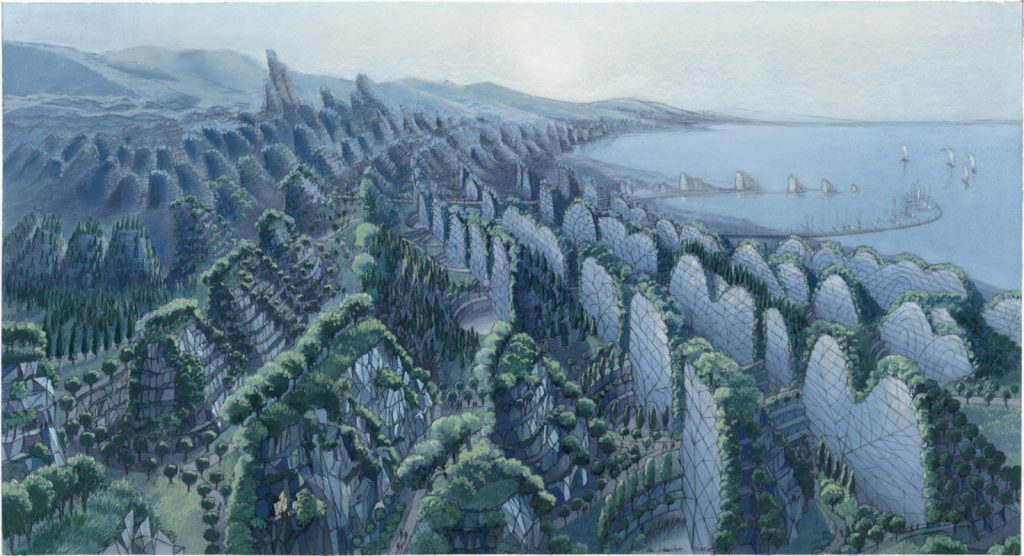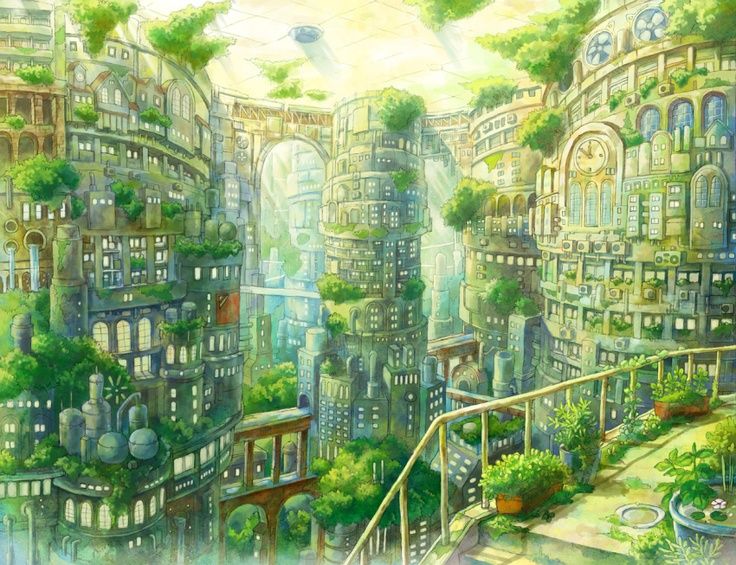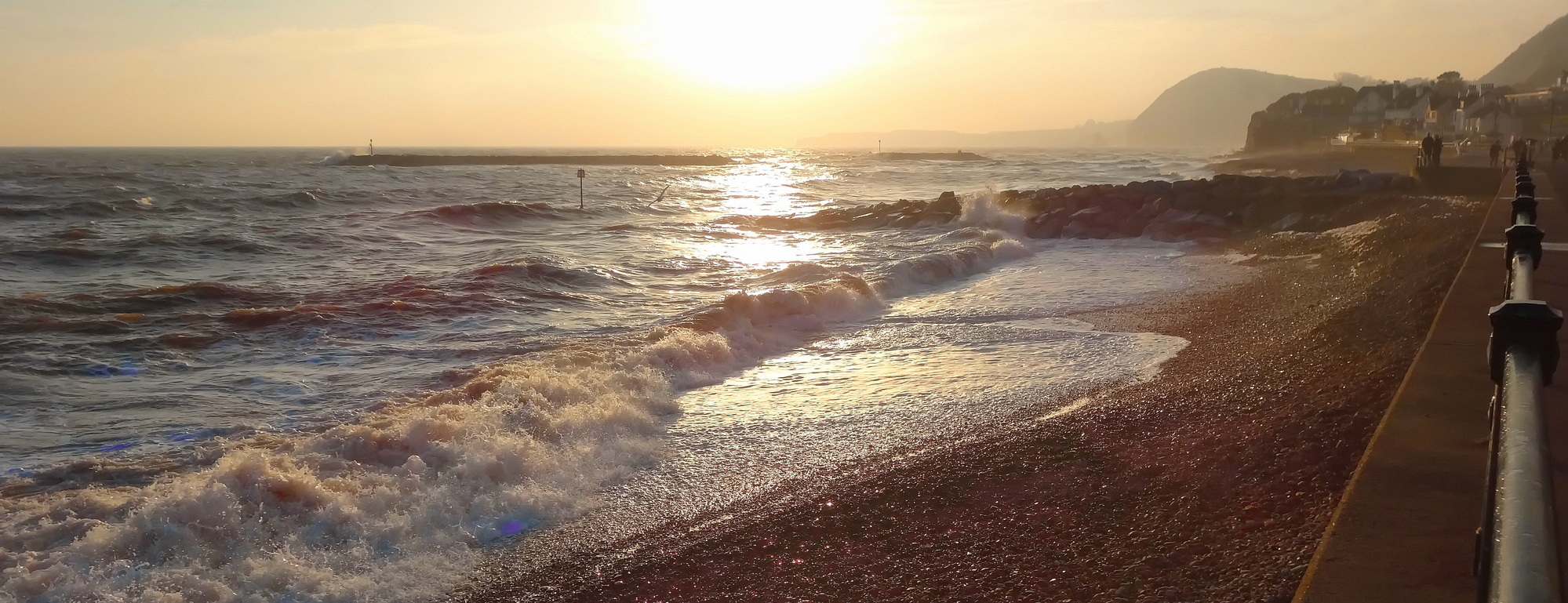As we look forwards into 2025, probably most of us want to be defying dystopian doomerism and looking beyond climate apocalypse.
First, let’s look back at a piece from 2024:
VISIONARY…
We could say the Vision Group for Sidmouth should be all about being ‘visionary’ – with some examples suggesting this, from its blog pages looking at where being visionary might work, whether it was new models of carbon neutral and sustainable development, the idea of rethinking food or the practice of redesigning where and how council employees work.
As a way to get really visionary, the VGS put together the SolarPunk Sidmouth website, starting over three years ago with a pretty solid question for our shared future: “How will we live together?”
And in the ensuing years, the SP Sidmouth blog has put out regular pieces envisioning our future – and how we might get there: that solarpunk is transformative and inspirational, that we can have a solarpunk future… now, and that we need to “imagine having our technologies built in harmony with nature…”.

An example of solarpunk art, Vegetal Cities by Luc Schuiten (2009)
[From a piece from earlier in the year: Solarpunk is visionary – Sidmouth Solarpunk]
UTOPIAN…
And indeed, the world of solarpunk can act as a very useful guide as to how we can navigate between the visionary and the utopian.
Here’s the view from the sci-fi writer Kim Stanley Robinson, where he asks: Can science fiction save us?
I felt a deep kinship and love for Ursula K. Le Guin and Iain Banks, these two great utopian writers. They’ve died, and I do feel a bit lonely for my own generation. But I also see a lot of young writers coming up who call themselves solarpunk, or hopepunk, or the new utopians, and whatnot. They’re forming schools, they’re trying to get enthusiastic about improvising our way to a green future. I think they’re utopian, but perhaps a little bit outdated or scared by the term “utopia,” because it’s so often used as a weapon to mean “unrealistic and never going to happen.” So they make up different names. I’m glad to see these. I don’t think utopian fiction will ever go away. It’s like a necessary blueprint for thinking our way forward. So it seems like it’s a good time for utopian fiction. I’m sad at losing colleagues I loved, but I’m encouraged at the way the genre itself is ratcheting its way back into people’s attention.
Talking of solarpunk and looking for further inspiration, there are the rich visual worlds of Art Nouveau and Art Deco.
The leading figure of the Arts & Crafts Movement William Morris was perhaps both a utopian and a visionary. To take just one are of his many interests: “If I were asked to say what is at once the most important production of Art and the thing most to be longed for, I should answer: a beautiful house.”
In the midst of the Victorian era, Morris looked to some sort of pragmatic utopia, balancing his utopian visions with the solidly hand-crafted, whether in design or architecture, the books he printed or the houses he built.
Today too, when rethinking the future, architectural utopias can provide visionary designs for a changing world:
In an ethical architectural utopia, sustainability is seamlessly woven into every facet of design. Buildings are conceived as integral parts of the ecosystem, with an understanding that their existence has implications beyond their immediate surroundings. Concepts like biophilic design and regenerative architecture thrive, where structures interact synergistically with nature, fostering biodiversity, and restoring ecosystems. Moreover, architectural utopia strives for a net positive impact on the environment. For example, buildings that produce more energy than they consume, generate their water supply and contribute positively to local ecosystems. It reflects a commitment to not only reducing the carbon footprint, but actively restoring the health of environment from years of degradation.
But is this utopian… or dystopian?

The above illustrates both the piece quoted above and the piece “Degrowth is utopian, and that’s a good thing“. Others would warn against “utopian visionaries who won’t leave people alone“:
Jane Jacobs summarized her revolutionary view of cities in one of the greatest books every written on urban design: The Death and Life of Great American Cities, a broadside against urban planners’ obsession with orderly, sanitized, rectilinear cities. For Jacobs, messy serendipity was what made cities lively, safe and productive. Messiness meant new buildings next to old, commercial next to residential, and activity at all hours of the day and night — anathema to planners.
Perhaps, then, we need to say farewell the utopian city. To cope with climate change we must learn from how nature adapts. And if we look at the efforts made in the South West of late, we need to ask if town planning has really learnt how to be ‘pragmatically utopian’.
If we are looking for eco new towns, the likes of Cranbrook can only be described as a “cowpat” development, plonked in the middle of a field without any thought of its environment. And there are real concerns about proposals for a ‘second Cranbrook’ in East Devon – and whether we have learnt lessons.
To finish, here’s a look from earlier in the year at Poundbury: inside King Charles’ visionary utopian town:
Back when he was the Prince of Wales and the Duke of Cornwall, King Charles lll created a model town on his land in Dorset, on England’s south coast. Famous for his love of classical architecture, he dreamed of creating a place of beauty and filled the town with a medley of Georgian houses, Dorset cottages and even a miniature replica of Buckingham Palace. He named it Poundbury. Three decades on, click or scroll on to see how the King’s urban experiment has developed…
…
